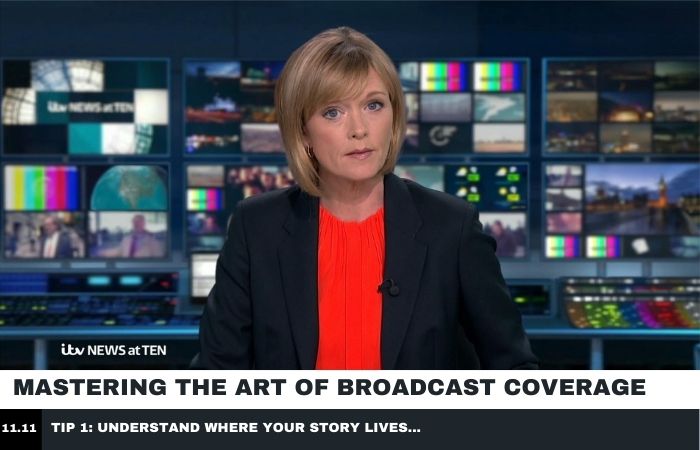
Broadcast PR 101
There’s not been too many good things to say about the pandemic since it began, but the broadcast world has certainly benefited. There has been a real surge in its listener and viewer figures since March 2020, as for so many of us it’s become an essential part of daily life.
This is obviously a fantastic opportunity for those of us who work within communications, yet we often hear clients tell us of their struggles to secure broadcast coverage for their stories and campaigns. I know budget doesn’t always stretch to hire a helping hand, but that doesn’t mean that TV and radio is completely unattainable for your comms team.
I host broadcast PR masterclasses (feel free to get in touch!) for clients, big and small, who want to boost their broadcast coverage and here are few of my best tips from this webinar:
1. UNDERSTAND WHERE YOUR STORY LIVES
There are three types of broadcast stories. News, information and entertainment. While a story can have elements of all 3, a common issue is that a story lacks purpose falls between the gaps – not really landing strongly in any of those categories. Don’t fall between the gaps. Know what your story has to offer. Write it, build the content around this category. Then pitch it accordingly.
2. DON’T GET STUCK IN A RUT WITH SPOKESPEOPLE
There are a huge variety of media personalities lending their name and expertise to broadcast media tours. The only problem is, they were working for your competitor last week and another the week before that. While they are trusted by broadcast, they aren’t always offering something new. Think outside the box. Offer broadcasters an interview opportunity to be excited about as well as delivering your key messages.
3. USE THE DONG
Writing press releases is a PR’s bread and butter, but writing for radio or television requires a slightly different tact. Think of the ITV News at 10 ‘Dongs’ when writing headlines and sub headers. Short, snappy and to the point. Broadcasters are looking for punchy speech content, so write the body of your story accordingly. Does it read well as a script? If you’re getting bored halfway through, so will the producer! Keep it short and packed full of facts.
4. KNOW YOUR STUFF & BE PERSISTENT
STOP. Before picking up the phone to any broadcaster make sure you have a firm understanding of the shows content or station you are calling. Broadcast producers are so busy, every second is precious. It’s important not to get a reputation as a time waster. Remember, the news agenda changes daily and producers work shifts – not your average 9 to 5. So, a “no” today doesn’t always mean “no” tomorrow.
5. UNDERSTAND THE RULES &
NEGOTIATE
Brand mentions ARE allowed. According to Ofcom guidelines, broadcasters
should name the source of any figures/information they give out to allow the
public to make their own decisions on how valid it is. Meaning your report or
research must be credited at least once to your brand. If it’s not obvious,
negotiate how and where your plug will be weaved in and don’t be afraid to get
it in writing. But don’t overdo it – becoming known for overbranding can hurt
your broadcast chances in the future. Stick to one mention per interview.
Amy Stone
Senior Account Manager
Comments are closed.